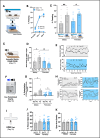This is a preprint.
Tracking Conditioned Fear in Pair-Housed Mice Using Deep Learning and Real-Time Cue Delivery
- PMID: 40463247
- PMCID: PMC12132537
- DOI: 10.1101/2025.05.10.653260
Tracking Conditioned Fear in Pair-Housed Mice Using Deep Learning and Real-Time Cue Delivery
Update in
-
Tracking conditioned fear in pair-housed mice using deep learning and real-time cue delivery.Neurobiol Stress. 2025 Jun 19;37:100742. doi: 10.1016/j.ynstr.2025.100742. eCollection 2025 Jul. Neurobiol Stress. 2025. PMID: 40678084 Free PMC article.
Abstract
Post-traumatic stress disorder (PTSD) is a complex and prevalent neuropsychiatric condition that arises in response to exposure to a traumatic event. A common diagnostic criterion for PTSD includes heightened physiological reactivity to trauma-related sensory cues, in safe or familiar environments. Understanding complex PTSD criteria requires new pre-clinical paradigms and technologies that integrate sensory physiology (e.g., auditory, visual, olfactory) with behavior. Here we present a novel Pavlovian-based paradigm using an open-source software plus deep learning-based pose estimation to investigate the effects of a recurrent conditioned stimulus (CS) on fear behaviors in pair-housed mice within the home cage. Simultaneous home cage video recording and analysis of CS-evoked freezing behaviors were performed using a deep learning model, with consideration for light-dark circadian cycles. Fear-conditioned dyad mice exhibited high CS-evoked freezing, with evidence of extinction learning (characterized by low freezing) during the mid-phase of the 2-week paradigm. Females exhibited reduced CS-evoked home cage freezing compared to males with circadian differences between the light (low freezing) and dark (high freezing) periods. Following the 2-week paradigm, fear-conditioned mice, compared to controls, exhibited heightened context-dependent freezing, while males but not females showed heightened startle reactivity. Taken together, these results demonstrate a novel software application for examining conditioned defensive and fear behaviors over time in mouse dyads within an ethologically relevant environment. Future applications could be used for more integrative analysis and understanding of neural circuits and heightened sensory threat reactivity, potentially improving the understanding and treatment of PTSD.
Keywords: Freezing; Home Cage; PTSD; Pavlovian fear conditioning.
Figures




Similar articles
-
Tracking conditioned fear in pair-housed mice using deep learning and real-time cue delivery.Neurobiol Stress. 2025 Jun 19;37:100742. doi: 10.1016/j.ynstr.2025.100742. eCollection 2025 Jul. Neurobiol Stress. 2025. PMID: 40678084 Free PMC article.
-
Developmental Differences in a Hippocampal-Cingulate Pathway Involved in Learned Safety Following Interpersonal Trauma Exposure.J Am Acad Child Adolesc Psychiatry. 2025 Jul;64(7):835-850. doi: 10.1016/j.jaac.2024.07.928. Epub 2024 Oct 3. J Am Acad Child Adolesc Psychiatry. 2025. PMID: 39368629 Free PMC article.
-
A contextual fear conditioning paradigm in head-fixed mice exploring virtual reality.bioRxiv [Preprint]. 2025 Apr 13:2024.11.26.625482. doi: 10.1101/2024.11.26.625482. bioRxiv. 2025. Update in: Elife. 2025 Jun 17;14:RP105422. doi: 10.7554/eLife.105422. PMID: 39651122 Free PMC article. Updated. Preprint.
-
The therapeutic potential of exercise in post-traumatic stress disorder and its underlying mechanisms: A living systematic review of human and non-human studies.Wellcome Open Res. 2025 May 27;9:720. doi: 10.12688/wellcomeopenres.23033.4. eCollection 2024. Wellcome Open Res. 2025. PMID: 40171151 Free PMC article.
-
The Black Book of Psychotropic Dosing and Monitoring.Psychopharmacol Bull. 2024 Jul 8;54(3):8-59. Psychopharmacol Bull. 2024. PMID: 38993656 Free PMC article. Review.
References
Publication types
LinkOut - more resources
Full Text Sources
